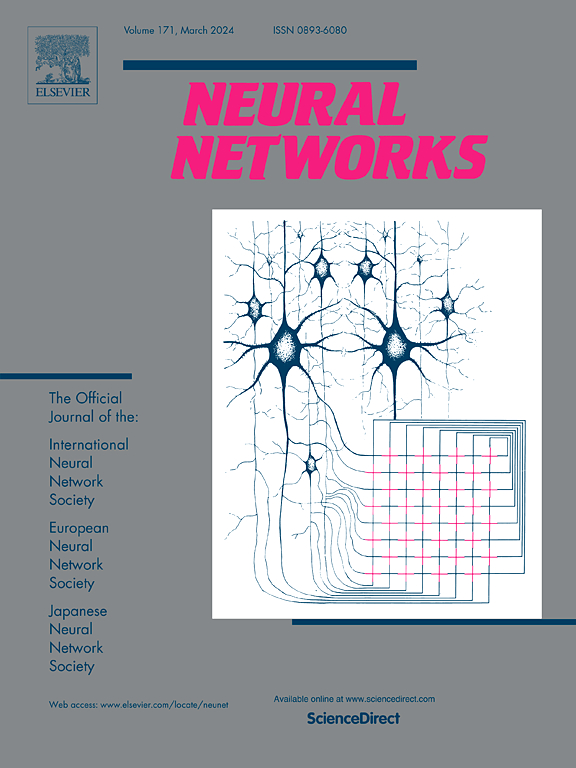利用神经网络进行可信脑电图解码的协议。
IF 6
1区 计算机科学
Q1 COMPUTER SCIENCE, ARTIFICIAL INTELLIGENCE
引用次数: 0
摘要
用于脑电图解码的深度学习解决方案迅速崛起,在各种解码任务中取得了最先进的性能。尽管性能很高,但现有解决方案并不能完全解决引入许多超参数所带来的挑战,这些超参数定义了数据预处理、网络架构、网络训练和数据扩增。自动超参数搜索很少执行,而且仅限于与网络相关的超参数。此外,管道对随机初始化导致的性能波动非常敏感,从而影响了其可靠性。在此,我们设计了一种用于脑电图解码的综合协议,该协议可探索表征整个管道的超参数,并包括多种子初始化,以提供稳健的性能估计。我们的方案在有关运动图像、P300、SSVEP 的 9 个数据集(包括 204 名参与者和 26 个记录会话)以及不同的深度学习模型上进行了验证。我们对影响协议的主要方面进行了大量实验,如用于超参数搜索的参与者人数、将搜索分为连续的简单搜索(多步骤搜索)、使用知情搜索算法与非知情搜索算法,以及获得稳定性能的随机种子数量。最佳方案包括通过知情搜索算法进行两步超参数搜索,最后使用 10 个随机初始化进行训练和评估。通过使用 3-5 个参与者子集进行超参数搜索,实现了性能和计算时间之间的最佳权衡。我们的方案在广泛的数据集和模型中始终优于最先进的基线管道,可以代表神经科学家以可信和可靠的方式解码脑电图的标准方法。本文章由计算机程序翻译,如有差异,请以英文原文为准。
A protocol for trustworthy EEG decoding with neural networks
Deep learning solutions have rapidly emerged for EEG decoding, achieving state-of-the-art performance on a variety of decoding tasks. Despite their high performance, existing solutions do not fully address the challenge posed by the introduction of many hyperparameters, defining data pre-processing, network architecture, network training, and data augmentation. Automatic hyperparameter search is rarely performed and limited to network-related hyperparameters. Moreover, pipelines are highly sensitive to performance fluctuations due to random initialization, hindering their reliability. Here, we design a comprehensive protocol for EEG decoding that explores the hyperparameters characterizing the entire pipeline and that includes multi-seed initialization for providing robust performance estimates. Our protocol is validated on 9 datasets about motor imagery, P300, SSVEP, including 204 participants and 26 recording sessions, and on different deep learning models. We accompany our protocol with extensive experiments on the main aspects influencing it, such as the number of participants used for hyperparameter search, the split into sequential simpler searches (multi-step search), the use of informed vs. non-informed search algorithms, and the number of random seeds for obtaining stable performance. The best protocol included 2-step hyperparameter search via an informed search algorithm, with the final training and evaluation performed using 10 random initializations. The optimal trade-off between performance and computational time was achieved by using a subset of 3–5 participants for hyperparameter search. Our protocol consistently outperformed baseline state-of-the-art pipelines, widely across datasets and models, and could represent a standard approach for neuroscientists for decoding EEG in a trustworthy and reliable way.
求助全文
通过发布文献求助,成功后即可免费获取论文全文。
去求助
来源期刊

Neural Networks
工程技术-计算机:人工智能
CiteScore
13.90
自引率
7.70%
发文量
425
审稿时长
67 days
期刊介绍:
Neural Networks is a platform that aims to foster an international community of scholars and practitioners interested in neural networks, deep learning, and other approaches to artificial intelligence and machine learning. Our journal invites submissions covering various aspects of neural networks research, from computational neuroscience and cognitive modeling to mathematical analyses and engineering applications. By providing a forum for interdisciplinary discussions between biology and technology, we aim to encourage the development of biologically-inspired artificial intelligence.
 求助内容:
求助内容: 应助结果提醒方式:
应助结果提醒方式:


